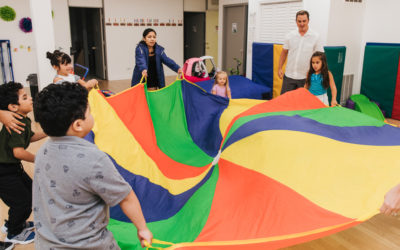Despite a growing movement toward people-first and positive language in the world of autism and autism awareness, many neurotypical people and experts still tend to fixate on the “negative” side of autism. In reality, many of the characteristics of people on the spectrum can be impressive and related to high intelligence.
Attention to detail, impressive long term memory, and increased sensory and visual-spatial abilities are just a handful of the traits that correlate between people on the spectrum and people with high intelligence. Let’s break those down a bit to understand the connection between autism and intelligence.
Long Term Memory
Many people on the spectrum struggle with short term memory. When it comes to long term memory however, studies like this one from Frontiers of Neuroscience demonstrated that long term memory was among the traits that correlated with high intelligence. The average neurotypical person can recall memories from the ages of 4-6. Some people on the spectrum can recall memories from further back.
Additionally, memory in people on the spectrum can closely resemble photographic or near photographic levels. Though they may not recollect a name or face, some individuals on the spectrum could surprise you with the small details they can recall. Things others might’ve missed, patterns of colors, numbers, and letters, might come to them easier than the “average” person’s memory. This attention to detail is another correlation to high intelligence.
Superb Attention to Detail
This one is practically universal. Many on the spectrum, especially those with Asperger’s, are known to be extremely attentive to certain details. This comes down to the very core of what makes people with autism unique. The way their brain processes information, sensory and otherwise, can be very different.
As a result of this characteristic, some people on the spectrum can seem obsessive, and react poorly to changes in their routine or environment. This study outlined in Time magazine compares characteristics in genius prodigies with those in children with autism. Many of the prodigies themselves had autism or displayed many of the same tendencies and traits of children on the spectrum. The prodigies also demonstrated the same attention to detail as those on the spectrum- some were even more intense in their attentiveness. This attentiveness can help amplify the individual’s ability to focus on a task, and accomplish it quicker, and more effectively than their neurotypical counterpart.
Sensory and Visual-Spatial Abilities
If you’re a parent of a child with autism, you probably have a good understanding of what escalates your child’s behavior, and the kind of environments and stimulation that they thrive in. One of the reasons that children on the spectrum thrive in sensory friendly and structured settings, like when receiving ABA therapy or at school, is the way they process sensory information. Often, reactions to sensations like physical touch, sound and sight can be heightened compared to neurotypical children.
Their sensitivity to sensory stimulus heightens their ability to distinguish between stimuli that would otherwise seem indistinguishable. This ties into their attentiveness to detail. Essentially, the combination of these traits can give people with autism a set of abilities that allows them to accomplish tasks and execute talents in a profound and impressive way.
The average neurotypical person may perceive people with high intelligence and those with autism as being “different,” but the two can actually be quite similar, or one in the same. One thing we can be sure of is that the traits displayed in people with autism can be a testament to the vast expanse of the human brain’s ability, and the results are extraordinary.
If you want to learn more about autism, ABA therapy, and how we can help enrich your child’s life, please reach out on our contact page or keep up with our Facebook, Twitter, and Instagram feeds.



